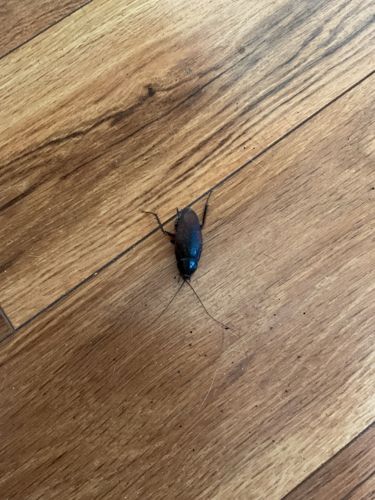Oriental Cockroach
Scientific Name: Blatta orientalis
Order & Family: Blattodea, Blattidae
Size: Males are typically 20-25 mm (0.8-1 inch) long, and females are 25-30 mm (1-1.2 inches) long.

Natural Habitat
Damp, cool, and dark places such as basements, crawl spaces, drains, sewers, under sinks, and outdoor areas like leaf litter, under rocks, and in compost piles. They are less common in upper levels of buildings.
Diet & Feeding
Omnivorous scavengers; they feed on a wide variety of organic matter, including decaying food, trash, starches, and other plant and animal matter. They prefer decaying organic material.
Behavior Patterns
Nocturnal; they are active at night, foraging for food and water. They are known for their fast movements when disturbed and can transmit diseases by crawling over food preparation surfaces.
Risks & Benefits
Risks: Can spread bacteria (like Salmonella and E. coli), viruses, fungi, and parasitic worms. They can also trigger allergies and asthma in sensitive individuals through their droppings and shed skins. Benefits: In natural ecosystems, they play a minor role as decomposers, helping to break down organic matter.
Identified on: 8/12/2025